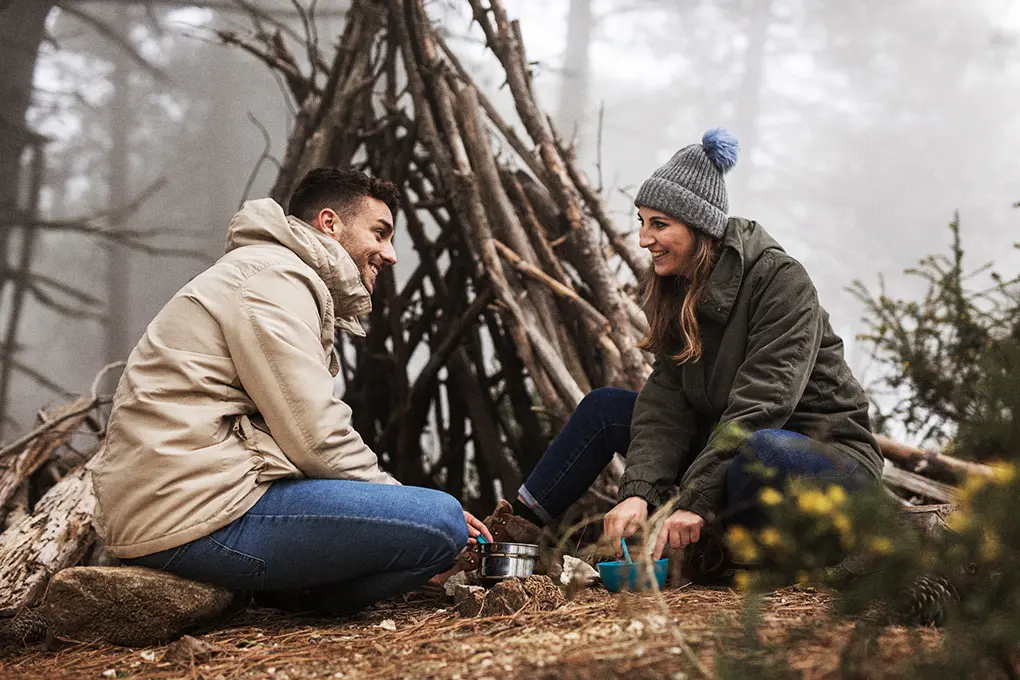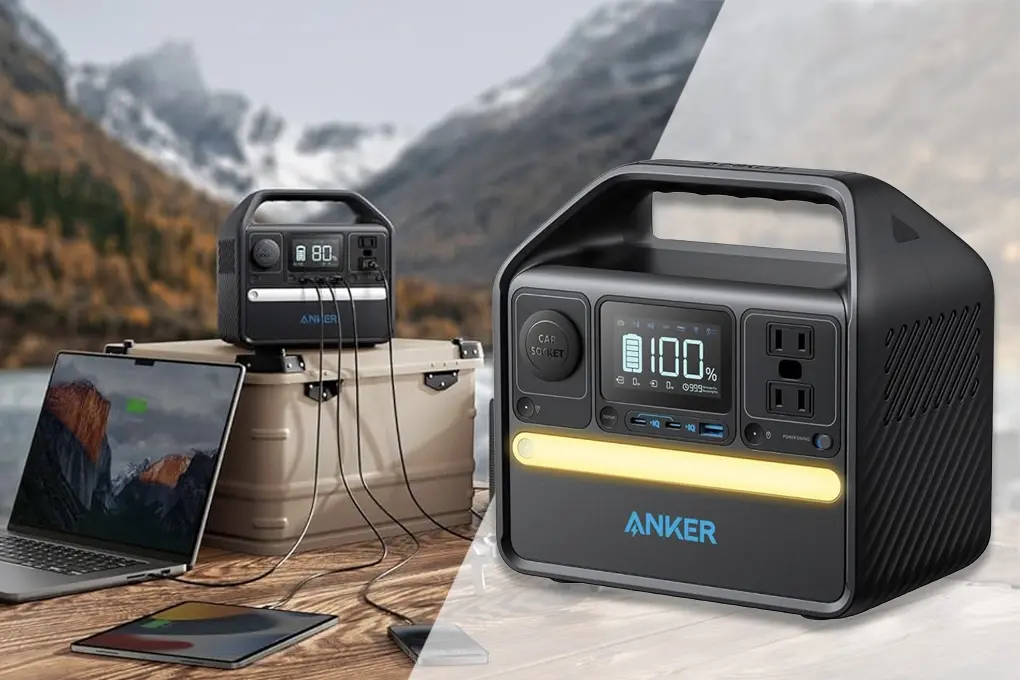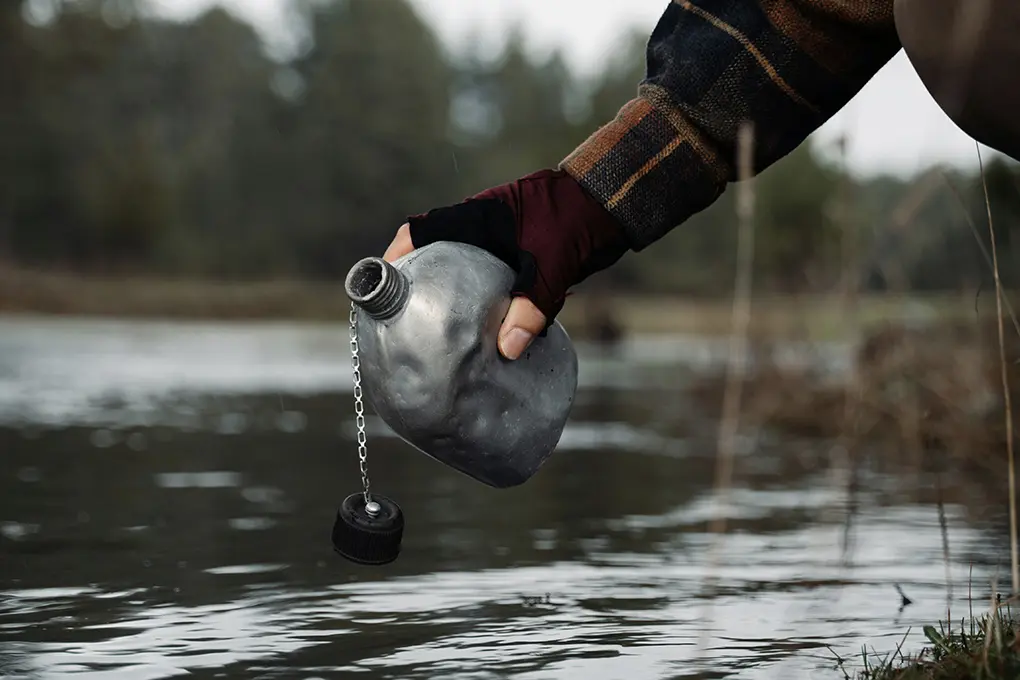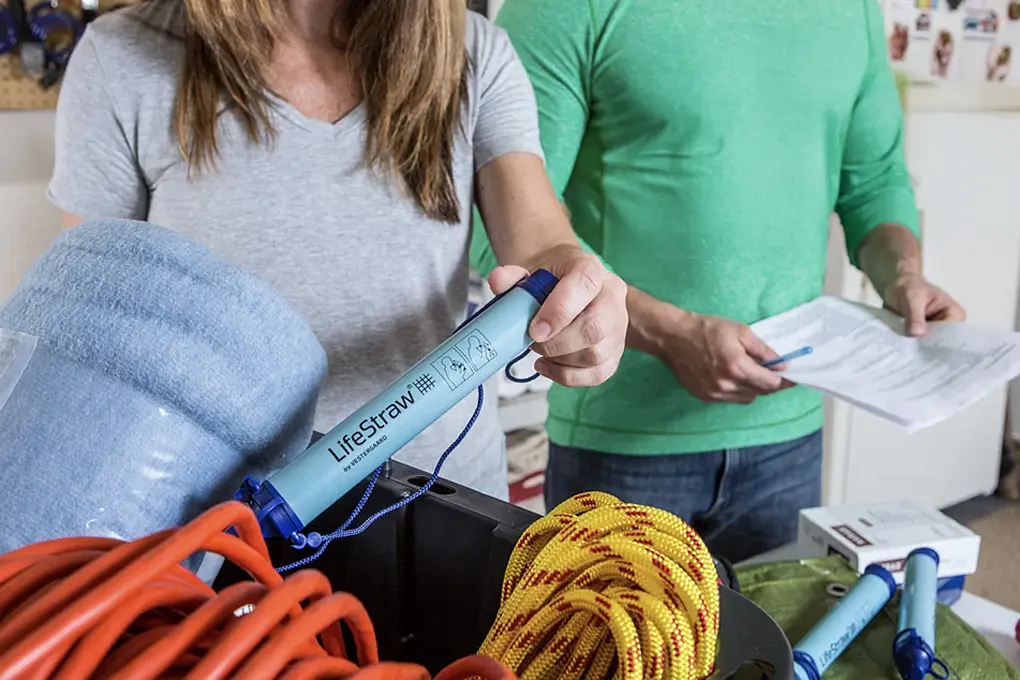Imagine this scenario: You’re five miles into a solo hike on a less-traveled trail when you slip on loose gravel, twist your ankle, and watch helplessly as your phone tumbles down a ravine. Suddenly, your pleasant day hike has become a potential survival situation. Would you have what you need to handle this emergency?
Solo adventuring gives you unparalleled freedom and connection with nature, but it also comes with heightened risks. For example, the leading cause of fatalities when hiking solo is falling from a substantial height.
According to the National Park Service, they respond to over 4,500 search and rescue incidents annually, with solo hikers accounting for a disproportionate percentage of these incidents.
Grand Canyon National Park tops this list, with 785 SAR incidents between 2018 and 2020, the most of any national park, with one of the most recent incidents in 2024 involving a 60-year-old male backpacker who was found dead near a remote trail,
This means that when you’re alone in the wilderness, you become your own first responder because there’s no partner to send for help or provide first aid if things go wrong. To put this in perspective, between 2007 and 2024, there were 4,213 deaths recorded at US national parks, many of which were likely preventable if adequate precautions had been taken.
At Batten Emergency, we believe self-reliance is the foundation of security and safety, especially in remote settings. This comprehensive checklist will help ensure you’re prepared for emergencies when adventuring solo, incorporating both essential gear and the critical skills needed to use that gear effectively.
This is your ultimate wilderness survival checklist for solo adventurers.
Table of Contents
Key Takeaways
- Solo adventurers need a comprehensive survival kit that includes navigation, communication, water filtration, shelter, and first aid.
- Detailed trip planning and regular check-ins with a trusted contact are crucial for solo safety.
- Reliable navigation tools and water purification methods are essential to prevent emergencies.
- Consistent practice of survival skills like fire starting, shelter building, and first aid builds confidence and self-reliance.
- Thorough preparation minimizes risks, empowering you to handle wilderness emergencies effectively.
Essential Gear for Solo Wilderness Adventures
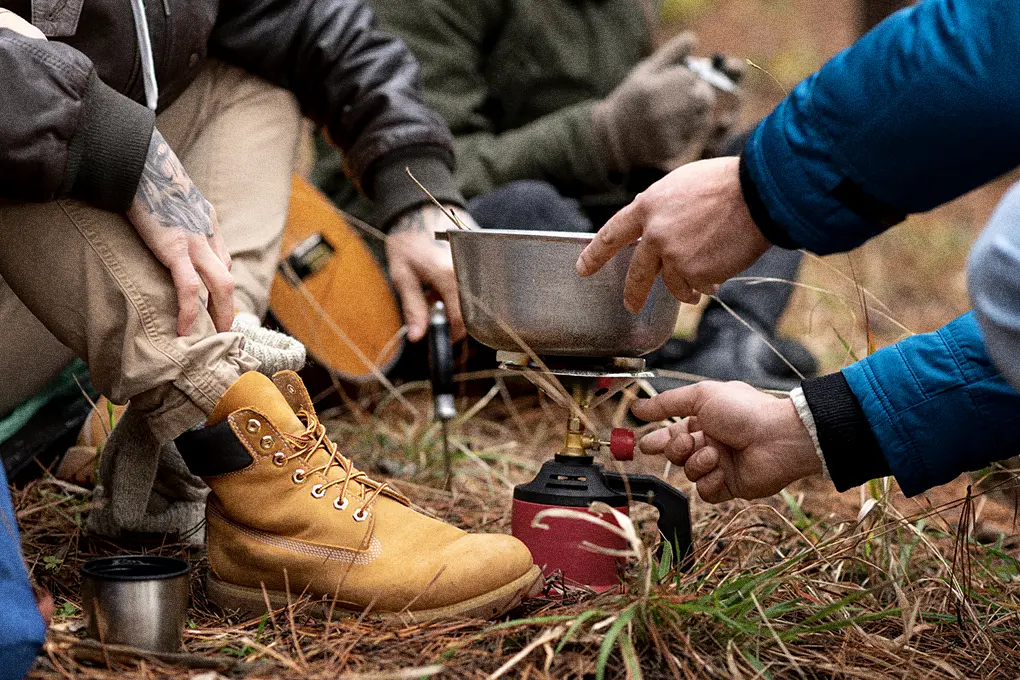
When you’re the only one carrying gear, every item must earn its place in your pack. Solo adventurers need to strike a careful balance between preparedness and weight management. Navigation, communication, and water purification top the list, among several other pieces of essential gear.
The following items form the core of a solid wilderness survival kit for those traveling alone:
Navigation Tools
Getting lost is one of the most common wilderness emergencies, and when you’re alone, there’s no second opinion on which trail to take. Modern technology is helpful, but never rely solely on your phone or GPS device.
A topographic map of your specific area and a quality compass are non-negotiable basics. According to search and rescue statistics, 42% of wilderness rescues involve lost hikers, many of which either didn’t have proper navigation tools or didn’t know how to use them effectively.
Learn how to triangulate your position and always identify prominent landmarks as you travel.
If you do carry electronic navigation, the Garmin inReach series offers reliable GPS capabilities with the crucial addition of satellite communication, allowing you to call for help from areas without cell service.
Remember that electronics can fail due to battery depletion, water damage, or simply being dropped, so physical navigation tools remain essential backups.
Communication Devices
When adventuring solo, your ability to call for help can make the difference between a minor setback and a life-threatening ordeal.
The statistics are telling, as the average wilderness rescue takes four to six hours from the time help is called, and that clock doesn’t start until someone knows you’re in trouble.
A satellite communicator or personal locator beacon (PLB) should be standard equipment for solo adventures who are beyond reliable cell coverage. To illustrate the importance of this, consider that only about 50% of Yellowstone National Park has cell service.
Devices like the Garmin inReach Mini 2 or ACR ResQLink offer the ability to signal for emergency assistance from virtually anywhere.
For areas with potential cell service, consider a durable power bank like the Anker 747 Power Bank to ensure your phone stays charged. At 25,600mAh, it can recharge most smartphones multiple times and withstand the rigors of backcountry travel.
Water and Purification
You can survive for weeks without food, but only days without water. Solo travelers must be especially diligent about hydration, as there’s no one else to share supplies or go for help if dehydration sets in. Recently, a father and daughter died in Canyonlands National Park as a result of dehydration while hiking in sweltering heat.
Carry at least two to three liters of water for a day hike, plus reliable purification methods for longer trips or emergencies. The EPIC Water Filter offers a portable solution that removes 99.99% of tap water contaminants and can filter over 100 gallons before replacement is needed.
Alternative options include water purification tablets, which are lightweight but require waiting time, or compact systems like the LifeStraw that allow drinking directly from water sources. The key is redundancy, so carry at least two different purification methods in case one fails or is lost.
Shelter and Weather Protection
Exposure to extreme temperatures can lead to hypothermia or heat illness within hours, a leading cause of death when adventuring, with as many as 160 annual deaths occurring in National Parks.
As a solo adventurer, you don’t have a partner’s body heat to rely on in unexpected cold, making emergency shelter even more critical.
An ultralight emergency bivy, such as the SOL Emergency Bivy or Survival Frog TACT Bivvy, weighs only a few ounces but can preserve up to 90% of your body heat in cold conditions. Pair this with a compact emergency tarp or poncho for protection from rain and wind.
Aside from specific gear, knowledge of natural shelter options is invaluable. Understanding how to construct a debris hut or snow cave appropriate to your environment could prove life-saving if you’re stranded overnight without your pack.
Fire-Starting Tools
Fire provides warmth, a means to purify water, a way to signal rescuers, and crucial psychological comfort when alone in the wilderness. The ability to reliably create fire in adverse conditions is a foundational wilderness skill.
Carry at least three different fire-starting methods: a primary tool like a ferrocerium rod or windproof lighter, waterproof matches in a sealed container, and a backup method such as a fire striker. Include easy-lighting tinder such as petroleum-soaked cotton balls or commercial fire starters that will catch even when conditions are damp.
The psychology of fire-making is particularly important for solo adventurers as the confidence and focus required to successfully build a fire in challenging conditions can help combat panic in survival situations. Practice your fire-making skills in various weather conditions before you need them in an emergency.
First Aid Supplies
When you’re miles from help and on your own, even minor injuries can escalate quickly. A well-stocked first aid kit tailored for wilderness emergencies is essential, but equally important is the knowledge to use those supplies effectively.
The Surviveware Survival First Aid Kit provides comprehensive supplies in a compact, waterproof package designed specifically for outdoor adventures. For solo travelers, consider adding extra supplies for ailments that could impair mobility, such as additional ankle wraps or blister treatment.
Several wilderness first aid courses are available through organizations like NOLS and the American Red Cross. These provide invaluable training on managing injuries when professional medical care isn’t readily available. As a solo adventurer, this training becomes even more critical, as you’ll need to self-administer first aid in many situations.
Food and Emergency Nutrition
While not as immediately crucial as water, food provides the energy needed to self-rescue or survive until help arrives. Solo adventurers should pack calorie-dense, non-perishable food that requires minimal preparation.
Aside from your planned meals, include emergency rations with long shelf life, such as energy bars or specialized survival food. Ideally, these should provide at least 2,000 calories per day and contain balanced nutrition to maintain energy and focus during stressful situations.
Consider the psychological aspect of food as well because in a survival scenario, familiar comfort foods can provide mental comfort when you’re alone and under stress. Pack at least one food item that you genuinely enjoy eating, even if it’s not the most weight-efficient option.
Tools and Equipment
A quality knife or multi-tool serves as the cornerstone of wilderness survival gear. The Gerber Ultimate Survival Knife offers versatility for numerous wilderness tasks and comes with additional survival tools including a fire starter, sharpener, and emergency whistle.
Additional essential tools include:
- A headlamp with extra batteries (hands-free light is particularly important when alone)
- Paracord or strong cordage (for emergency repairs, making shelter, etc.)
- Duct tape (wrapped around a water bottle or trekking pole to save space)
- Signal mirror and whistle for attracting attention
- Compact emergency saw or wire saw for shelter building
For solo adventurers, redundancy in critical tools is prudent. Consider carrying a small backup light source and knife, as the loss of either could significantly impact your survival capabilities.
Preparation: Before You Head Out Solo
The foundation of wilderness survival actually begins before you set foot on the trail. For solo adventurers especially, thorough preparation can prevent many emergency situations from developing in the first place.
Trip Planning and Communication
Creating a detailed trip plan and sharing it with a reliable contact is perhaps the most important safety measure for solo adventurers. According to search and rescue organizations, the absence of a clear trip plan is a factor in approximately 50% of extended search operations.
Your trip plan should include:
- Your planned route with alternatives
- Expected timeline with check-in points
- What gear you’re carrying
- When to alert authorities if they don’t hear from you
- Your vehicle description and where it will be parked
- Any medical conditions rescuers should know about
Establish a clear communication protocol with your contact person, including regular check-ins if possible. Many satellite communicators allow you to send pre-programmed messages at set intervals, which can provide peace of mind to loved ones and establish a timeline if rescue becomes necessary.
Weather and Conditions Assessment
Weather conditions can transform a manageable trail into a dangerous environment within hours. Solo hikers have less margin for error when conditions deteriorate, as there’s no partner to provide assistance or share body heat.
Check detailed weather forecasts specifically for your destination area, not just the nearest town, as mountain weather can vary dramatically over short distances.
Understand seasonal hazards for your specific location as spring stream crossings, summer thunderstorms, fall temperature fluctuations, or winter avalanche conditions all require specific preparation and gear.
Be especially conservative with your go/no-go decisions when traveling alone. Having the wisdom to postpone a trip due to concerning forecasts is the mark of an experienced adventurer, not a disappointing compromise.
Skill Development and Practice
The most important survival tool is your knowledge, especially when adventuring solo. Technical gear is only as effective as your ability to use it under stress.
Before heading out alone, develop proficiency in these essential wilderness skills:
- Navigation using map and compass
- First aid specific to common wilderness injuries
- Fire starting in adverse conditions
- Finding and purifying water
- Building emergency shelter appropriate to your environment
- Signaling for rescue
Many organizations offer wilderness skills courses where you can practice these techniques in a controlled environment before you need them in a real emergency. Consider taking a wilderness first aid course specifically, as the protocols differ significantly from urban first aid.
Survival Skills for Solo Adventurers
If you find yourself in a survival situation while alone in the wilderness, having a methodical approach can help prevent panic and improve your chances of a positive outcome, with the STOP protocol being essential.
If You Get Lost: The STOP Protocol
When you realize you’re disoriented in the wilderness, your first reaction might be to hurry to find your way, often making the situation worse. Instead, follow the STOP protocol:
- S – Stop: Immediately stop moving. Many lost hikers compound their problem by continuing to wander, often in circles, burning precious energy and potentially moving further from help.
- T – Think: Assess your situation calmly. When were you last certain of your location? What landmarks did you notice? What resources do you have available? What’s your greatest immediate concern (weather, injury, etc.)?
- O – Observe: Look around methodically. Check for trail markers, distinctive features that might be on your map, or signs of human presence. Note the position of the sun or stars for basic directional information.
- P – Plan: Create a concrete plan based on your observations and resources. This might be attempting to backtrack to your last known position, finding a defensible location to wait for help, or moving toward a major feature like a river or ridge where you might find a trail or better visibility.
As a solo adventurer, fighting the psychological impact of being lost is as important as the physical aspects. Maintaining a calm, methodical approach helps conserve energy and leads to better decision-making when there’s no one else to provide perspective or reassurance.
Signaling for Rescue
When self-rescue isn’t possible, effectively signaling for help becomes your priority. Understanding standardized distress signals increases the chances that your efforts will be recognized by rescuers or other adventurers.
Universal distress signals include:
- Three of Anything: whistle blasts, flames, smoke columns, reflective flashes
- Ground-to-Air Signals: an “X” made of contrasting materials indicates medical help needed
- SOS (… — …) via sound or light
- Bright Colored Clothing or Gear Spread in an Open Area
When using a whistle, the international distress signal is three short blasts, pause, repeat. A quality emergency whistle can be heard over much greater distances than the human voice and requires far less energy, which is crucial when you’re alone and possibly injured or conserving energy.
If you have a satellite communicator, follow the device instructions precisely for activating an SOS. False alarms can divert rescue resources from genuine emergencies and potentially result in fines.
Psychological Aspects of Solo Survival
The psychological challenges of a wilderness emergency are amplified when you’re alone. Without a companion to provide perspective or share decision-making, maintaining mental resilience becomes as important as physical survival skills.
Research on wilderness survival incidents shows that maintaining a positive mental attitude significantly impacts survival rates.
Techniques that can help include:
- Breaking large problems into smaller, manageable tasks
- Setting small achievable goals to maintain motivation
- Maintaining routines to create a sense of normalcy
- Using positive self-talk to combat catastrophic thinking
- Focusing on what you can control rather than what you can’t
Solo adventurers should consider mental preparation as important as physical training and gear selection. Visualization exercises, where you mentally rehearse your response to various emergency scenarios, can help you respond more effectively if those situations actually occur.
Building Your Solo Adventurer’s Emergency Kit
Based on the principles discussed above, here’s a compact checklist for building your wilderness survival kit. While individual needs may vary based on your environment and activity, these items form a solid foundation for solo adventures:
Essential Solo Wilderness Survival Kit Checklist
Here is a total checklist of all possible survival gear to bring along when you’re planning on going at it alone in the wilderness:
Navigation & Communication
- Paper topographic map (in waterproof case)
- Compass (know how to use it)
- Satellite communicator or PLB
- Smartphone in waterproof case
- Portable power bank
- Small notebook and pencil (for leaving notes if you relocate)
Water & Hydration
- Water bottles or reservoir (capacity for your environment)
- Water filter or purifier
- Backup purification (tablets or drops)
- Collapsible water container for camp
Shelter & Clothing
- Emergency bivy or space blanket
- Small tarp or emergency tube tent
- Extra insulating layer
- Rain gear
- Extra socks
- Warm hat and gloves (even in summer for overnight emergencies)
Fire & Light
- Waterproof matches in sealed container
- Ferrocerium rod or reliable lighter
- Fire starter tinder
- Headlamp with extra batteries
- Small backup light source
Food & Nutrition
- Energy-dense emergency food bars
- Extra day’s worth of regular meals
- Small comfort food item
- Electrolyte packets
First Aid & Health
- Comprehensive first aid kit with medications
- Personal prescriptions
- Insect repellent (seasonally appropriate)
- Sunscreen
- Blister prevention and treatment
Tools & Equipment
- Quality knife or multi-tool
- 50 feet of paracord
- Emergency whistle
- Signal mirror
- Duct tape
- Small repair kit specific to your gear
- Emergency shelter repair items (tent patches, etc.)
Documents & Information
- ID and emergency contact card
- Small amount of cash
- Paper copy of emergency procedures
- Insurance information
Customize this kit based on your specific adventure plans, environment, and personal needs. For winter backcountry travel or multi-day expeditions, additional specialized equipment will be necessary.
Empower Your Solo Adventures
Solo wilderness adventure offers unparalleled freedom and personal growth, but it requires a higher level of preparation and self-reliance.
By thoughtfully assembling your gear, developing crucial skills, and mentally preparing for potential challenges, you transform what might be considered “risky” into a calculated adventure.
Remember that preparation is about freedom. The confidence that comes from knowing you can handle what nature might throw your way allows you to fully immerse yourself in the wilderness experience without unnecessary anxiety.
At Batten Emergency, we believe that security comes from preparation and knowledge, not from avoiding adventure. Our mission is to make safety accessible without the hype or fear-mongering that often surrounds emergency preparedness. To explore more wilderness survival tools and expert-vetted gear, visit our emergency preparation collection.
The principles in this guide provide a foundation for self-reliant adventure. By giving careful attention to your gear, skills, and mindset, you’ll be ready to handle challenges independently and enjoy the profound rewards that come from connecting with wilderness on your own terms.
Frequently Asked Questions
What Should I Do Before My Solo Trip?
Create a detailed itinerary, share your plan with a trusted contact, check weather forecasts, and ensure all essential gear is in working order.
How Reliable Are Electronic Devices in the Wilderness?
Electronic devices offer convenience, but rely on them minimally. Always carry backup analog tools like maps and compasses in case of failure.
How Do I Choose the Right Water Purification Method?
Consider your trip length, water source quality, and weight limitations. Options include portable filters, purification tablets, or compact devices like the LifeStraw.
Is Wilderness First Aid Training Necessary?
Absolutely. Training in wilderness first aid enhances your ability to manage injuries when professional help isn’t immediately available.
How Can I Maintain My Mental Resilience While Alone?
Practice stress management techniques, set achievable goals, take breaks, and mentally rehearse your responses to potential emergencies to keep focused and calm.
Sources
- Visitor Protection – Aviation Program (U.S. National Park Service)
- Circumstances and causes of death of hikers at different altitudes: A retrospective analysis of hiking fatalities from 2003–2018 – ScienceDirect
- National parks with the most search and rescues across the US
- Most Dangerous National Parks in the U.S. | 2007-2024 Data Analysis
- Solo backpacker, 60, found dead near rugged and remote Grand Canyon trail | Arizona | The Guardian
- Why some lost hikers live and others die
- Answering the call
- Mortality in Different Mountain Sports Activities Primarily Practiced in the Summer Season—A Narrative Review – PMC
- S.T.O.P.: Stop, Think, Observe, Plan
- How does your brain impact your survival chances in the wilderness? | HowStuffWorks
